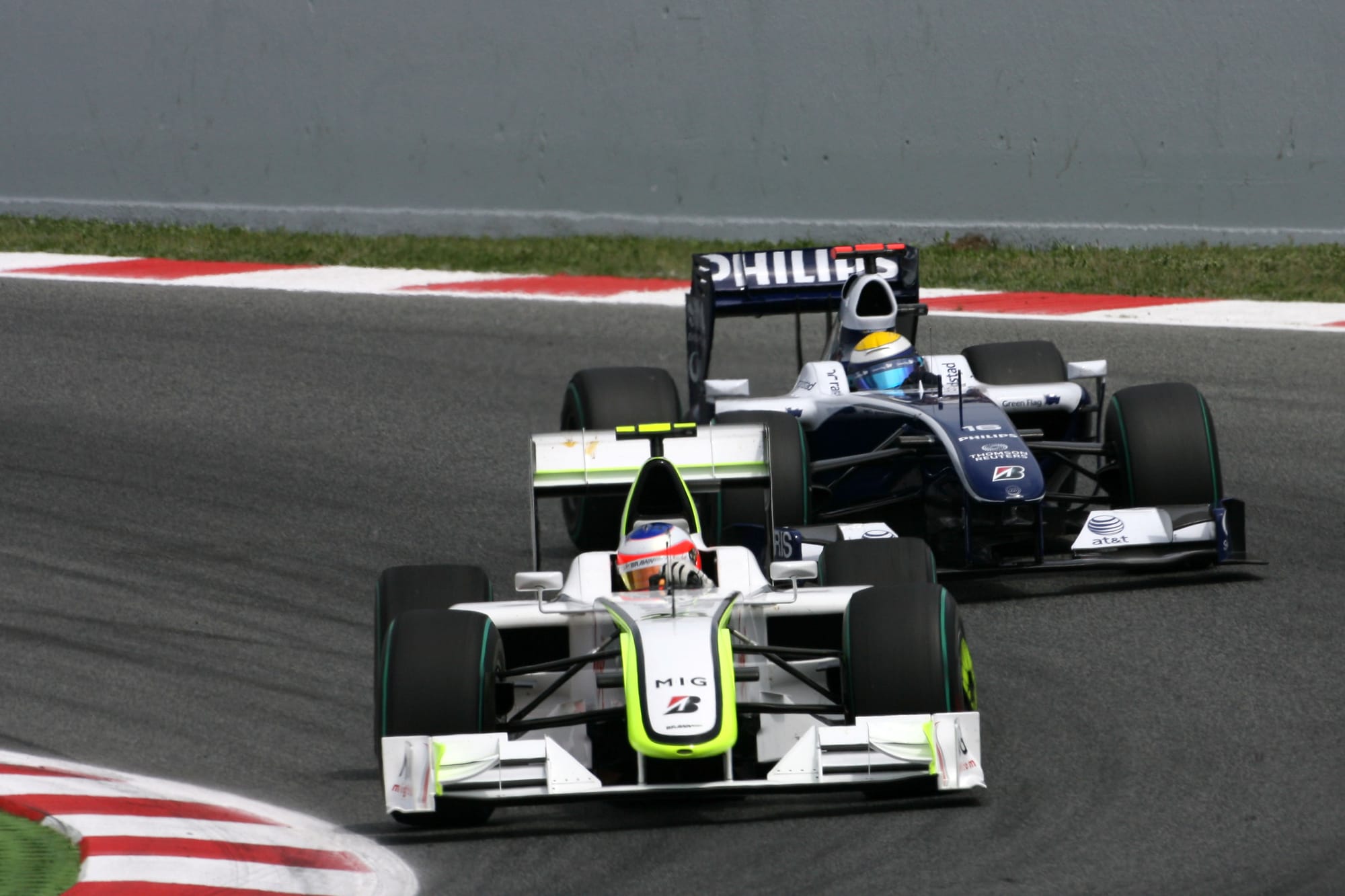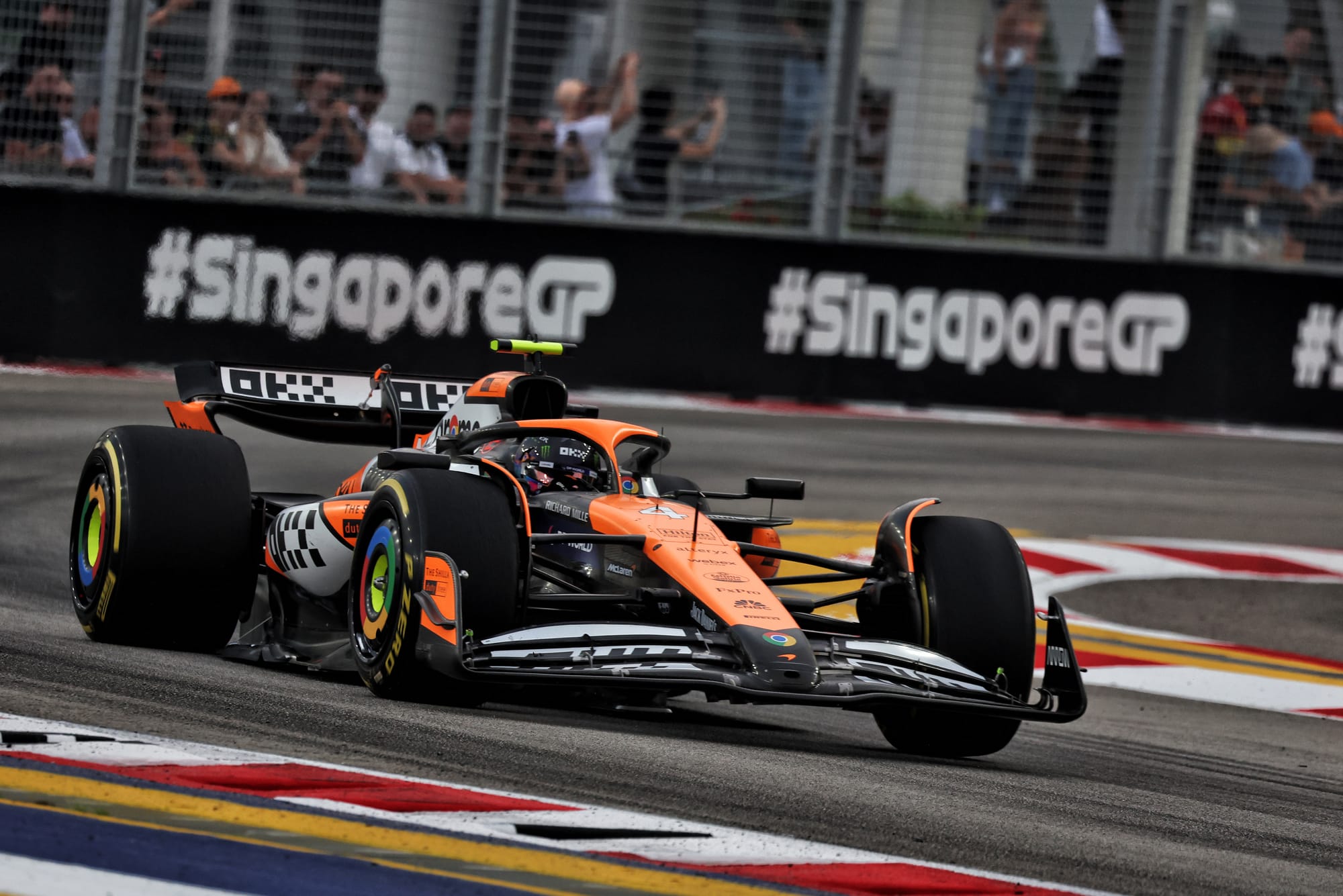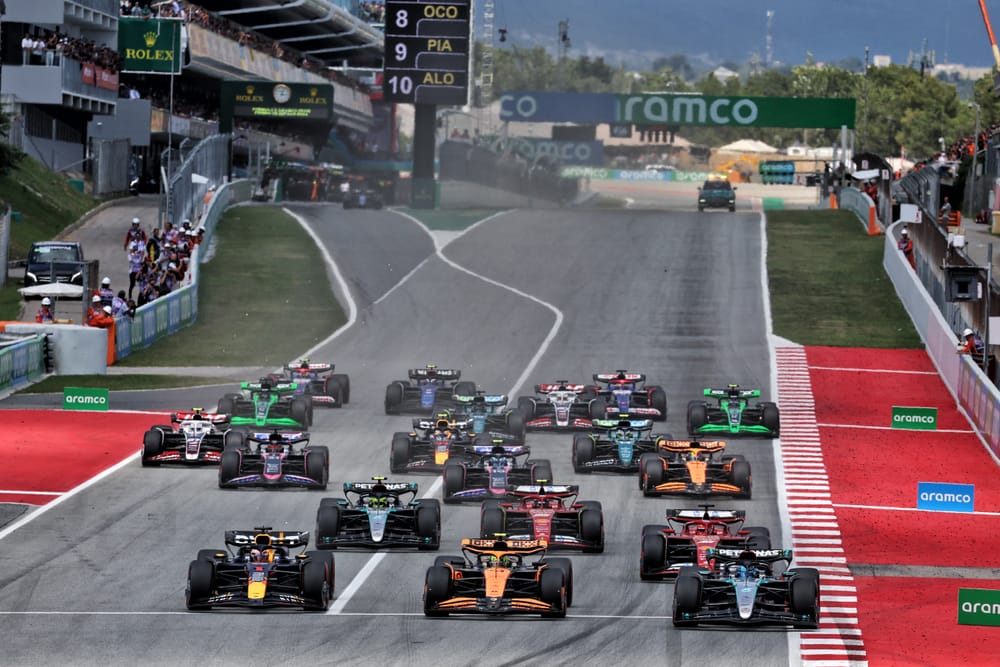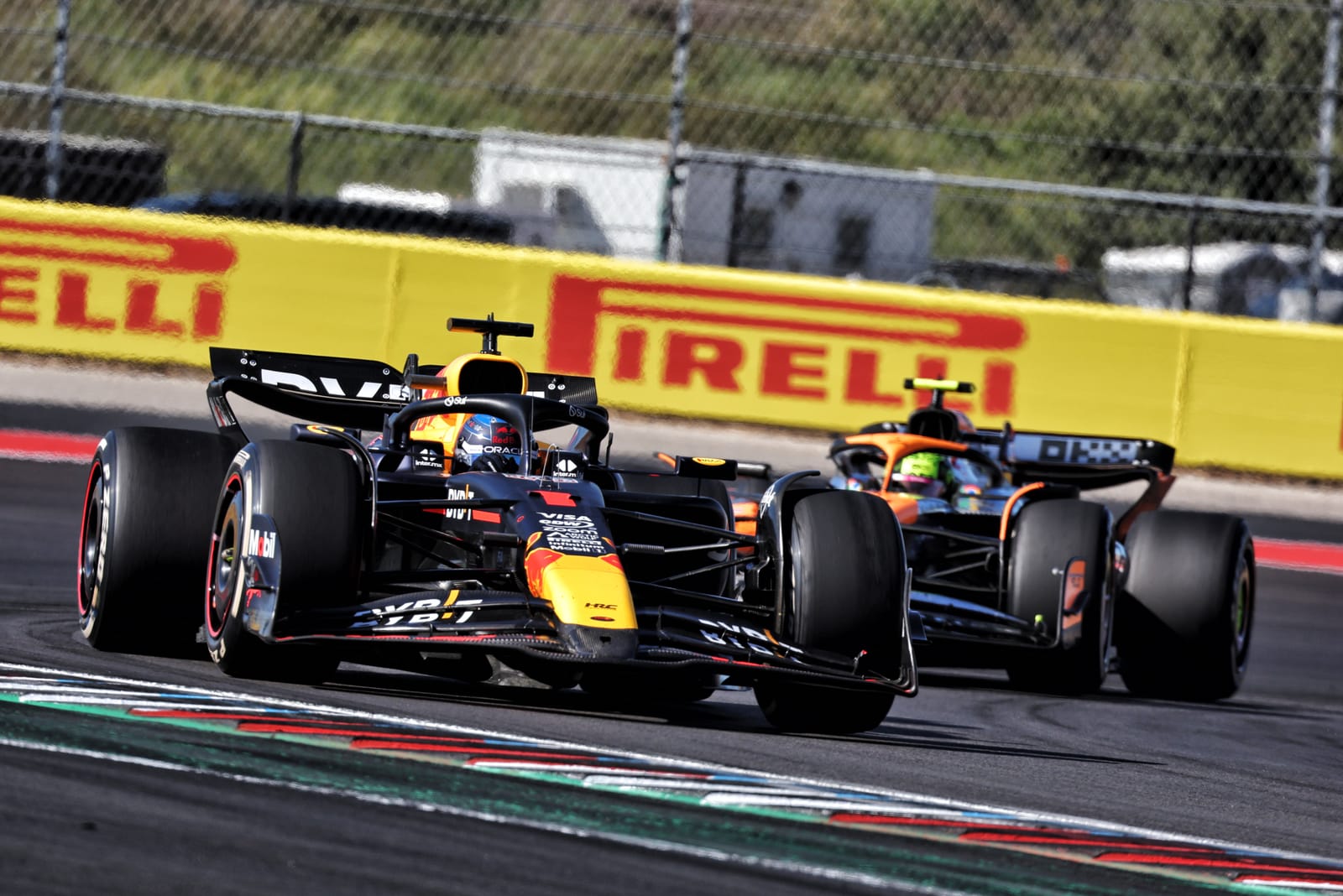The change to the Formula 1 front wing load tests and the reduction in the allowable deflection by the FIA is too little, too late.
The Spanish Grand Prix, when the new technical directive kicks in this year, is the ninth race of a 24-race season, which means a major change one-third of the way through the year.
That means it’s almost a two-part championship, with the first running to the initial version of the rules and the rest to another.
As far as I’m concerned, this is distorting the championship fight before it has even started.
It reminds me of what happened when the double diffuser appeared in 2009.

Three teams – Brawn, Williams and Toyota - started the season with it and Jenson Button ran away with the championship before the others were able to introduce their own version. It then became a close season, but Brawn’s early success ensured it won both championships. Those with more extreme wing flexibility early on in the 2025 season could benefit from a similar pattern.
It’s difficult to quantify what this change will do to each individual car or indeed driver. It's more about what each car needs to get the best performance out of it, but it is a 33% reduction in the allowable deflection so it will have an impact. In some cases that will be positive, in others negative.
I always say there’s no magic bullet in F1 because it’s about all the parts of the jigsaw working in harmony and creating the best overall package.
It’s not about simply having the best flexible front wing, it’s how it works in conjunction with the underfloor, with the outer floor edges, and with the rear wing characteristics to produce the best aero map profile through the speed range that moves the balance of the car rearwards with speed. However, if you get your flexi-wing working correctly to enhance the other requirements of the car then you will have a faster car.
Way back in September of last year, I wrote an article and brought to the table the fact that it is front wing rotation that is the critical issue here rather than wing deflection.
The outer ends of the front wing mainplane and flaps are not large downforce producing components. It’s easy to see they are fairly flat in angle of attack and if that isn’t enough, the blockage of the front tyre will destroy any flow that might produce downforce.

This area of the front wing is mainly used to generate outwash, which in turn reduces the potential inwash. If unmanaged, this would be detrimental to the downforce produced by the underfloor.
It has taken the FIA more than three months to come up with this new technical directive. As far I can see, it is keeping the same loads and load location and reducing the vertical deflection from 15mm to 10mm. Yes, there will be a slight loss of front downforce with the end of the wing ‘theoretically’ five millimetres higher at very high speeds, but the impact will be minimal compared to the loss due to the rotation of completely flap assembly further inboard.
If a team conceives its car to optimise the 15mm deflection for those first eight races and scores big points finishes then fine, but not every team is in a position to do that. Others will optimise for the 16 races where the deflection is reduced to 10mm.
The difference could be a completely new front wing, underfloor and floor outer edge detail, so not cheap. I know we have the cost cap to restrict over spending, but surely the governing body should not be putting the teams in this position?
The changes required for race nine will mean that any team that optimises its car for the first eight races will require a new front wing. Structurally, it will obviously need to change; however, profile wise it may also need to be different.
These wings are designed to work optimally within a small window of adjustment. At some lower downforce circuits we often see the teams trim the trailing edge of the rearmost flap - this allows them to keep the flap assembly at its optimum angle. For some teams at some circuits this mid-2025 change might just put them outside of that optimum window more often.
My other complaint is that the FIA hands down penalties to drivers when they make a poor decision and also fine teams for an unsafe release from their pit box, In both these instances, they have milliseconds to make that decision not three months - which is what the FIA have had to introduce new deflection tests.
By now, the start of February, most teams will have put to bed their 2025 car characteristics and be focusing their top end design engineers on the 2026 car - which is being designed for major aerodynamic rule changes - leaving their not so experienced design engineers to dot the I’s and cross the T’s on the 2025 car’s development path. Now that all needs to change.
If I was a technical director now I would be fairly miffed about this change. That’s not because I’d believe my front wing was flexing better than others, but because of it being a mid-season change. The FIA says “these adjustments are aimed at further refining our ability to monitor and enforce bodywork flexibility regulations, ensuring a level playing field for all competitors to promote fair and exciting racing” (my italics). In reality, this is in no way creating a level playing field.
We all want a tight championship from the first to the last race, but the FIA has just scuppered that. I’m not saying it will happen, but it could turn into an eight-race championship and a-16 race championship.
How I'd police front wings
As I mentioned, last September I suggested a change to the FIA's testing procedure that I think would make a big difference.
Here's a summary of my idea from that article, followed by the relevant regulations in full with my suggested changes noted on them.
The regulations related to front wing flexibility tests set out that the load test is applied at a distance from the central line of the front axle forward, and from the car centre line outwards. So while there’s some flexibility in where this is applied it is only measuring deflection rather than rotation.
If the rules changed the position used, it would be possible to test deflection and rotation because it would expand the area that could be tested. It wouldn’t be difficult to do as the load would still be the same.

The location shown on the Red Bull highlighted in red is the most forward position from the front axle that these components can be placed.
The locations shown on the Ferrari highlighted in blue are the load positions, loads and maximum deflection.
The locations shown on the Mercedes highlighted in green are my proposals that should identify if any team was pushing the boundaries of wing deflection or wing rotation just that little bit too far.
FRONT WING FLEXIBILITY TESTS - THE RULES IN FULL + GARY'S SUGGESTED REVISIONS
3.15 Aerodynamic Component Flexibility
3.15.1 Introduction of load/deflection tests
In order to ensure that the requirements of Article 3.2.2 are respected, the FIA reserves the right to introduce further load/deflection tests on any part of the bodywork which appears to be (or is suspected of), moving whilst the car is in motion.
3.15.2 Load/deflection linearity
All load deflection tests must have a nominally linear elastic relationship unless otherwise stated.
3.15.3 Rear Wing Skins
The skins of the rear wing elements may deflect no more than 2mm when a 60N force is applied to the skin normal to and away from the element.
The force will be applied using a vacuum cup of 50mm diameter and the deflection will be measured at the outer diameter of the cup.
3.15.4 Front Wing Bodywork Flexibility
The flexibility of Front Wing Bodywork will be tested by applying a load of [0, 0, -1000]N at points [XF, Y, Z] = [-800, ±800, 250] or [-1000, ±800, 250].
My change: = [-500, ±800, 250] or [-1000, ±800, 250].
The load will be applied in a downward direction using a 50mm diameter ram on a rectangular adaptor measuring 350mm (650mm) in the X-direction and 150mm in the Y-direction. This adaptor must be supplied by the team and should:
a. Have a flat top surface without recesses.
b. Be fitted to the car so as to apply the full load to the bodywork at the test point and not to increase the rigidity of the parts being tested.
c. Be placed with the inner face 725mm from Y=0.
d. Be placed with its forward face at XF=-1100mm.
e. Be placed with its top face at Z=250
f. Have a mass of no more than 2kg (3kg)
The deflection will be measured relative to the survival cell and along the loading axis.
When the load is applied symmetrically to both sides of the car the vertical deflection must be no more than 15mm.
When the load is applied to only one side of the car the vertical deflection must be no more than 20mm.
3.15.5 Front Wing Flap Flexibility
Any part of the trailing edge of any front wing flap may deflect no more than 5mm, when measured along the loading axis, when a 60N point load is applied normal to the flap.




